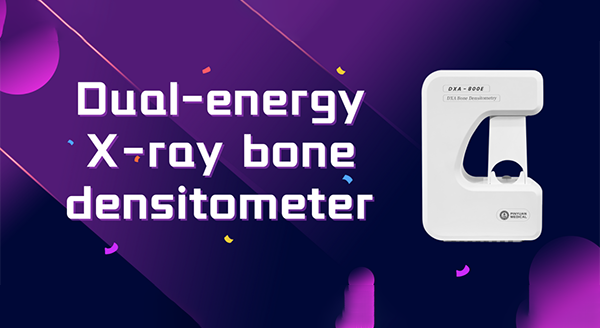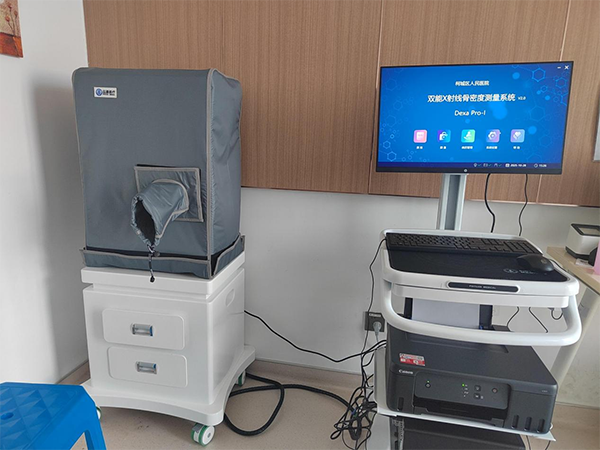Dual-energy X-ray bone density meter is an objective and accurate examination instrument for detecting osteoporosis. It can measure and evaluate the mineral status of bones with high precision and accuracy, and can be widely used in bone density detection for the diagnosis and prevention of osteoporosis in clinical departments such as orthopedics, endocrinology, geriatrics, rheumatology, orthopedics, nephrology, and obstetrics and gynecology. It is of particular significance for the differential diagnosis of various diseases such as low back and leg pain in the elderly.
Working principle
DXA achieves precise bone density measurement based on the principle of X-ray energy attenuation difference. The core process is divided into five steps:
Dual-energy emission: The equipment generates two types of energy rays, low-energy and high-energy. The low-energy rays are mainly absorbed by soft tissues, while the high-energy rays are more absorbed by bone minerals.
Tissue penetration: The ray beam penetrates the target areas such as the lumbar vertebrae and hips, and the absorption coefficients of different tissues form differential signals.
Signal acquisition: The linear dual-energy detector receives the penetrating ray signal, converts it into an electrical signal and transmits it to the computer.
Interference elimination: By using algorithms to separate the attenuation data of soft tissues and bones, interference factors such as fat and muscle are eliminated.
Density calculation: The final output of bone mineral density. This principle has been listed by the WHO as the “gold standard” for bone testing.
Application field
Disease diagnosis: Confirmed diagnosis of osteoporosis, screening for bone metabolic diseases such as osteogenesis imperfecta
Risk assessment: Predict the risk of fractures and guide preventive intervention measures
Treatment monitoring: Track the efficacy of anti-osteoporosis drugs and assess the trend of bone mass changes
Special population management: Assessment of bone development in adolescents, monitoring of bone load in athletes, and follow-up of bone health in the elderly
Selection indicators
Certification compliance: Give priority to models that have passed ISO, CE or FDA certifications;
Performance parameters: Focus on precision error, scanning time, and radiation dose;
Compatible scenarios: Peripheral dual-energy X-ray bone densitometer, no need for a separate lead room (the radiation range of forearm scanning is small, and regular clinic protection can meet the requirements), suitable for medical institutions at all levels.
After-sales service: Confirm installation training, calibration maintenance and fault response capabilities.
Pin Yuan Medical
Dual-energy X-ray bone densitometer Dexa Pro-I: It is a split design with remote operation function. The distance between the main unit and the doctor can reach 1.5-3.0 meters, which can effectively ensure the safety of the doctor’s operation. Meanwhile, it features fast imaging speed and high image quality.
Dual-energy X-ray bone densitometer DXA-800E: It adopts a dynamic flat panel detector with low radiation dose, no need for a lead room, and is equipped with a patented forearm lead protective cover, which can provide full protection for all parts except the measurement area.
Dual-energy X-ray bone densitometer DXA-800F: It is an integrated type, easy to move, takes up little space, and adopts a lead-free room design, making it very suitable for departments with limited space.
For medical institutions, a thorough understanding of the technical principles of DXA, a clear recognition of its application value in scenarios such as disease diagnosis and risk assessment, and the scientific selection of equipment based on their own needs can not only enhance the diagnosis and treatment level of bone diseases but also provide patients with more accurate and safer bone health services.
Post time: Oct-30-2025


